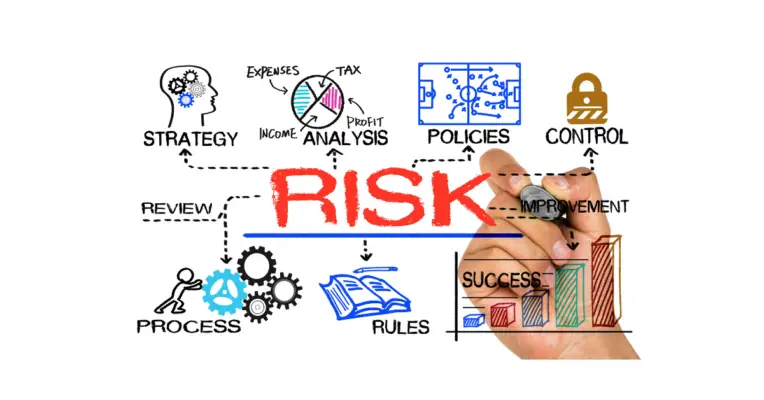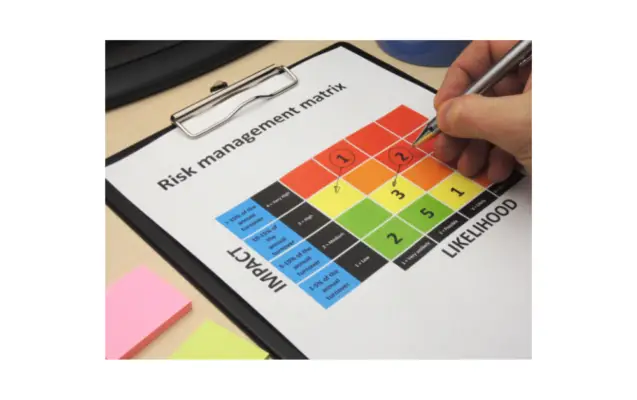Third party risk management is a key component of cybersecurity. In 2017, the average annual cost of cybercrime was over $1 million per company, and third-party risk accounted for 80% of those costs. As such, it is important to take steps to reduce risks as much as possible.
Third-party risk management is a critical aspect of any business or organization, and it is important to understand the various risks associated with third parties. At its core, third-party risk management is about mitigating the risks that come from doing business with other companies. Third parties can include employees of a company, contractors and vendors, and even partners in common ventures. As you might imagine, managing this many relationships can be challenging. However, it’s also incredibly important to make sure your enterprise stays healthy by keeping these outside influences under control with a comprehensive strategy for third-party risk management.
Third-Party Risk Management relates to identifying, valuing, and controlling the various risks that may arise throughout the complete lifecycle of your relationships. Large-picture potential risks are extensive and could be reputational, strategic, managerial, economic, and cultural. Additional data security risks include improper storing information by third parties as well as the detrimental and potentially damaging effects of noncompliance and unregulated distribution processes. The risk of fraud or abuse of data occurs during procurement and should not begin before the offboarding procedure.
This guide will help you identify which areas are most vulnerable to third-party disruption and provide recommendations on how to minimize those risks. It also provides information about contracting with third parties so that your organization can mitigate legal liabilities.
Third parties provide vital financial services to firms in financial services. The Outsourcing process is so successful for many firms that they’re completely dependent on third parties when they need them to provide critical mission-critical services. In order for corporations to effectively maintain oversight and to exercise their responsibility, it is imperative to institute and maintain third-party risk management systems. This involves risk management and the many stages of their value chain.
Third party risk examples
Third-party risk is a major concern for businesses of all sizes. Here are three examples of third-party risks that businesses need to be aware of:
1. Data breaches: A data breach occurs when a third party accessed confidential information without permission. This can happen when a third-party vendor stores data insecurely or if an employee of a third-party business shares confidential information without authorization. A data breach can have serious consequences for a business, including reputational damage, financial losses, and regulatory penalties.
2. Fraud: Fraudulent activities by a third party can cause financial losses for a business. For example, a vendor might submit false invoices or an employee of a third-party business might engage in embezzlement. Businesses need to carefully vet their third-party vendors and have strong internal controls to protect against fraud.
3. Contractual disputes: Disputes between a business and a third party can arise for various reasons, such as disagreements over the terms of a contract or problems with the quality of goods or services provided. Contractual disputes can be time-consuming and expensive to resolve, so it’s important for businesses to have clear and concise contracts with their vendors.
Third Party Relationships
Many professionals will support you with your TPRM program. Your organization might have the strongest supply chain but your system will only protect your weakest link in this chain. In the modern world, a strong cyber security posture involves significantly more than your employee’s hardware and software and your security tools. The use of software providers – mainly software packages: such services or software providers should have control of your environment. The recent attack against web hosting provider GoDaddy should cause some alarm.
Third party relationship in the financial services industry with ongoing monitoring of data breaches ensures third party management is important for managing third-party risk. Manage risk of third party ecosystem and vendor risk with business continuity practices in a safe and sound manner. Third party relationships can also be equated to vendor management. Not all vendors will respect the contract management provisions and applicable laws. Multiple risks on vendor contracts will benefit from third party relationships and third-party ecosystem.
Legal and compliance leaders need to undertake due diligence of various vendors to determine high risk and mitigate risks of critical aspects. Independent reviews of new vendors especially on security risk and data breaches of customer information. The latest news on the offboarding process of compliance and non-compliance process regulations.
Legal compliance to various regulations on third party relationship creates ongoing monitoring to manage risk of non-due diligence. Continuous monitoring of data breach and business relationships inherent activities in-house.
The party risk management program will include independent reviews of party risk management program and confidential information to access critical data. Reporting of third-party risk is the sole responsibility of the risk management department in line with industry practices and regulations.

Consideration for Selecting Third Party Risk Management Framework for Third Parties
Third-party risk management frameworks are necessary for businesses to identify, detect, minimize and remediate their dependency on third parties for business operations.
The framework guides the process of assessing dependencies on third parties that might impact the business. It typically includes defining the organization’s goals, understanding risks drawn from incident likelihood or consequence severity scenarios then through a set of requirements establishing an initial baseline assessment of the level of priority for remediation needed. It also offers tools to integrate with existing risk management processes including execution levels of services required across different organizational groups.
As more information becomes available about this potential partner or new tool or service offered by a partner it is crucial that organizations constantly re-evaluate these relationships in order to mitigate any new associated risks.
Often, third-party risks are part of boards board agendas with CEO/Board level responsibility in many organizations. Organizations can now leverage the third part of their supply chain directly including sales, distributors, and support services. As business becomes increasingly decentralized, there is an increasing need for third sector governance standards. Best-in-class organizations leverage third-party services extensively while effectively controlling their risks associated. The increasing usage of technology, such as cloud services, is, in turn, increasing the trend toward outsourced services and rising associated risks. In terms of work done by third parties, the value increases the threat of disruption/failure.
National Institute of Standards and Technology (NIST) and the International Organization for Standardization (IS) have popular risk management frameworks. Implementing a security framework helps minimize financial and reputational damage as the incident of a security breach hits. How can we improve cyber security? Why not? Is cyber security important? The third-party risk management framework provided shares a standard for decision-making allowing for minimizing the hassle of managing Vendor Risk. The result will reduce overall costs for your organization in terms of customer relations and reputation to which your business can turn.
Many third-party risk management frameworks exist, including COBIT, ISO/IEC 27000 family of standards, BSI’s Information Security Management Auditing Toolkit (ISMAT), and ITIL. Additional frameworks have been devised by consulting firms for specialized needs. How would you choose the best one for your company?
Each has its own strengths – COBIT is best for auditing. It can be used to identify policies that are not enforced at all or sufficiently so as well as to detect any exceptions in security controls implemented by target system stakeholders against established control objectives to reduce corresponding vulnerabilities within the total model environment.
ISO/IEC 27000 family of standards focuses on information security controls that will help identify and prevent risks to the organization. Companies should choose the framework that will support their current business model while simultaneously minimizing the risks to which your organization is exposed. The structure of each framework varies but they all revolve around establishing what you might need in order to ensure proper risk management. It is vital that these standards are regularly reviewed and upgraded when necessary, especially because of cyber-security threats.
All companies are very different from other companies because there are no firm controls on the responsibility of vendor risk. TPRM therefore often encompasses many departments and many different roles. Let’s focus on the parties responsible for managing their vendors through the entire third-party lifecycle. In terms of management of suppliers through the third party lifecycle, it needs to be a collaborative effort to work together and manage the vendor lifecycle third-party risk.
Importance of Third Party Risk Management
Almost every modern-day organization requires three-party help to provide operations for its employees. When third parties don’t deliver they have severe and long-lasting consequences. Outsourcing is required in modern business. This does not only save money but also provides an easy way to use a resource that an organization might not have in-house. The downside is that relying on third-party risk management programs could leave your business vulnerable, it could leave your business vulnerable. More than half of breaches over the past three years have resulted from third-party intervention.
I’m not sure that third parties could do better. Any third party to whom you’re dealing carries security risks. TPRM eliminates these risks. Almost all compliance requirements require ongoing surveillance of your third-party supply chain. Is it possible for a computer to access privileged information or private files of users? Ask some important questions. What if someone doesn’t know where they can have sourced it? How should I manage all my information? How do you know if someone is hacked on your network? Does this matter? Are our vendors responsible for providing security for your data?
It is critical that companies have an integrated robust third party risk managing program. Reputation is increasingly at risk. Senior managers should have a clear understanding of the risk in cyber security from their organizations as well as third party and third parties services providers. These may be providers and suppliers, marketing partners HR providers, and anyone else who could be subject to fraud if they are harmed by a breach. The risk assessment process should be part of your organization’s internal controls and comprise supplier and third-party risk assessment.
ROI is significant when leveraging the automated options provided by built-in software. The biggest benefits of using purpose-built software include the main benefits of automation and the ability to scale a successful TPRM management program.
In the United States, the Office of the Currency Controls the performance of third-party service providers in contracts with regulated financial institutions. If you are in Australia and registered with APRA, see our report on APPRc CPS 234″: information security and prudential standards. In the Supervision of Technology Service Providers booklet of the FFIEC it is emphasized that using third-party providers does not diminish the responsibility to ensure those activities are conducted by board members.

Challenges of Third Party Risk Management
Third party risk management does not need to be done alone. There are five important steps to minimizing risk. I would say identifying which business you deal with and whether these businesses might introduce risk to them is essential. Evaluation of Third Party security posture is essential. Manage the risks by preparing a policy and deciding how to remediate problems. Monitor third parties to ensure they meet contract obligations and remain secure. Third parties are monitored for compliance with contractual obligations and maintain a strong security posture, said the writer of the book.
Security breaches have increased 89% between 2018 and 2019. 53% rated enterprises are victims of third-party-caused data breaches. Of these enterprises whose data was compromised at least two companies were the culprits. The average U. By including COVID-19 into the mix third party cyber-security risks are more prevalent for legal and compliance experts say Ponemon Institute.
Most third party programs will automatically have risk management best practices as they develop. Among the three most important best practices are described below. These three best practices apply to nearly every company and can be applied to nearly every company. TPRM is a way to create your own risk management system in any way.
Deloitte’s managed service TPRM helps organizations increase efficiency in their relationships with third parties. The service provides senior management with a full view of risk and performance across the extended portfolio.

Conclusion
Third-party risk management is an important part of any company’s operations. The best thing you can do for your business and the people it employs is to make sure that third party risks are managed as effectively, efficiently, and economically as possible. Whether this means creating a robust framework or selecting one from our comprehensive list of options, we want to help you find what works best for your needs. We hope that through reading this guide you’ve learned more about how third party risk management services work; if not please let us know! Our experts would be happy to answer any questions or concerns you may have had while learning about these critical services in order to ensure they meet all of your needs. Lastly, don’t forget to take advantage of our free third-party risk assessment exercise.
Chris Ekai is a Risk Management expert with over 10 years of experience in the field. He has a Master’s degree in Risk Management from University of Portsmouth and is a CPA and Finance professional. He currently works as a Content Manager at Risk Publishing, writing about Enterprise Risk Management, Business Continuity Management and Project Management.

